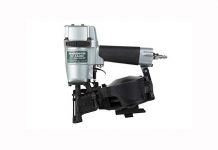I’d love to give you the answer in a nutshell. But it’s a little more complicated, so read on.
“Myopia, also known as nearsightedness, is a common type of refractive error where close objects appear clearly, but distant objects appear blurry.”
— National Eye Institute (NEI)
You’re likely to make more than a handful of key job decisions in the long march of a complete career — some thoughtfully planned, and some due to pleasant serendipity. But we can be prone to myopia as we move from position to position throughout a career, or remain past the shelf-life expiration date of a job we once loved.
Guess who doesn’t suffer from nearsightedness when it comes to your career? The recruiter or hiring manager who sees your entire work experience of thousands of days reduced to a series of bullet points on a sheet of paper or a LinkedIn profile. They weren’t around for the trees you witnessed up close; they truly only see the forest.
How often should you switch jobs — and what frequency alarms human resources (HR) departments? If you want to get grounded in what’s admittedly an extremely broad question, it’s fruitful to be aware of job movement across the broader economy. The U.S. Bureau of Labor Statistics (BLS) publishes a biennial report on job tenure — i.e., the length of time workers have stayed in their current positions.
The BLS last published its “Employee Tenure Report” in 2016. Per the study’s findings, the median number of years which workers had been with their present employers in the baseline month of January 2016 was 4.2 years, down from 4.6 years in January 2014.
Perhaps not surprisingly, “Food services and drinking places” had the lowest employee tenure, at 1.8 years, while Federal government jobs boasted the longest employee tenure, at 8.8 years.


















